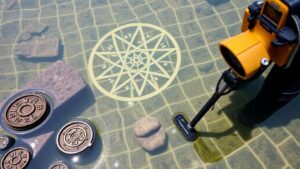Detecting in Sand Dunes: Adjusting for Signal Drift in Shifting Terrain
Detecting in Sand Dunes: Adjusting for Signal Drift in Shifting Terrain
Detecting in sand dunes presents unique challenges due to the dynamic nature of the terrain. As wind and other environmental factors continuously reshape these landscapes, traditional detection methods that rely on static conditions can lead to significant inaccuracies. This article explores the complexities of detecting in sand dunes, particularly focusing on how to adjust for signal drift, ensuring reliable results in a shifting environment.
Understanding Signal Drift
Signal drift refers to the gradual deviation of a measured signal from its true value due to various factors, including environmental changes and equipment limitations. In the context of detecting in sand dunes, signal drift is commonly influenced by:
- Shifting sands
- Variable moisture levels
- Temperature fluctuations
These factors can lead to erroneous readings when surveying for archaeological artifacts or conducting geophysical assessments. For example, a metal detector’s response can vary significantly when detecting an object buried in dry sand compared to wet sand due to differential conductivity.
The Role of Terrain Dynamics
The constantly shifting terrain poses specific challenges for detection technologies. Sand dunes, typically characterized by their granular composition and steep slopes, can alter the propagation of signals emitted by detection devices. This variability can lead to:
- Inconsistent object detection rates
- Increased false positives
- Difficulty in pinpointing locations
For example, a survey conducted at the Great Sand Dunes National Park in Colorado revealed that researchers experienced a 30% decrease in detection effectiveness during windy conditions, directly correlated to the movement of fine particles obscuring the ground signals.
Adjusting Detection Techniques
To effectively compensate for signal drift in shifting sands, adopting a multi-faceted approach is essential. Consider the following adjustments:
- Calibration of Equipment: Regular calibration of detection devices is critical. Changes in temperature or humidity can affect sensitivity, so recalibrating before each use ensures accurate readings.
- Use of Differential GPS: Incorporating GPS technology allows for real-time location tracking, helping to account for drift caused by moving sand.
- Data Filtering Algorithms: Employing software that utilizes data filtering algorithms can help in distinguishing between actual signals and noise caused by environmental variances.
Case Study: Archaeological Survey in the Sahara
A noteworthy examination of detection adjustments can be observed in the ongoing archaeological surveys conducted in the Sahara Desert. Researchers have recognized the fundamental need to adapt their methodologies to combat considerable signal drift caused by both desert winds and the fluid nature of sandy surfaces.
The team employed a hybrid approach by integrating both electromagnetic induction and ground-penetrating radar (GPR). Through trial and error, they refined their algorithms to filter out noise generated by shifting sands and other interfering signals. Over a two-year period, they achieved a 45% increase in successful detection rates of buried artifacts.
Real-World Applications
The methodologies and techniques developed for detecting in shifting sand dunes extend beyond archaeological applications. are also crucial in:
- Environmental Monitoring: Detecting subsurface structures that might impact local ecosystems.
- Infrastructure Development: Assessing ground stability for building projects in sandy regions.
- Natural Resource Exploration: Identifying subterranean resources like groundwater, minerals, and hydrocarbons.
For example, oil companies operating in coastal regions have successfully adapted detection technology to trace oil deposits beneath shifting sands, thus minimizing costs and reducing the environmental impact of exploratory drilling.
Conclusion: Key Takeaways
Detecting in sand dunes requires a nuanced understanding of the factors contributing to signal drift. By implementing advanced calibration techniques, employing differential GPS systems, and utilizing data filtering algorithms, accuracy can significantly improve. As demonstrated through various case studies, the methods developed in this specialized field have broad implications, paving the way for enhanced detection across multiple sectors.
By prioritizing adaptable strategies in the face of ever-changing environments, researchers and industry professionals can overcome the challenges posed by shifting terrains, ultimately achieving more reliable and meaningful results in their investigations.

